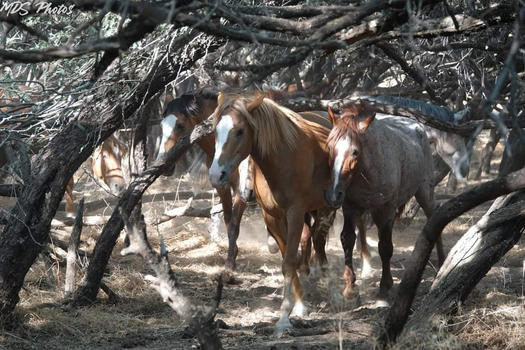
When you haven’t seen a wild horse all day, this is where they are…
July 1
When you haven’t seen a wild horse all day, this is where they are; deep in the shade of the mesquite tree forests that they themselves helped create and cultivate.

Really you ask? Here’s how.
The horses eat the mesquite beans as a source of protein, and then poop them out. The seeds are still alive in the manure, because horses are non-ruminents (contrary to ruminent cattle, who do not poop live seeds). Then, when it rains, the seeds germinate and grow up in a bed of great fertilizer. The next year you’ll see the baby trees in the old manure piles. Without the horse manure, the desert sand is much too low in nutrients. Once the trees are older, the horses also make the trees stronger and taller, by hedging the bottom branches. They also make the trees more fireproof, by weeding around them, so there’s less firefuel.
This is the very important symbiotic function of wild horses and their environment. The horses deserve some credit for it, because the mesquite tree forests give shade and shelter to all wild life and the many birds in the Tonto National Forest. The important fire mitigation is something the Forest Service spends millions on, but the horses do for free!
Thank you for spreading this positive message about the benefits of having wild horses in a forest.
Picture from our Advocates page by Mark Storto.
